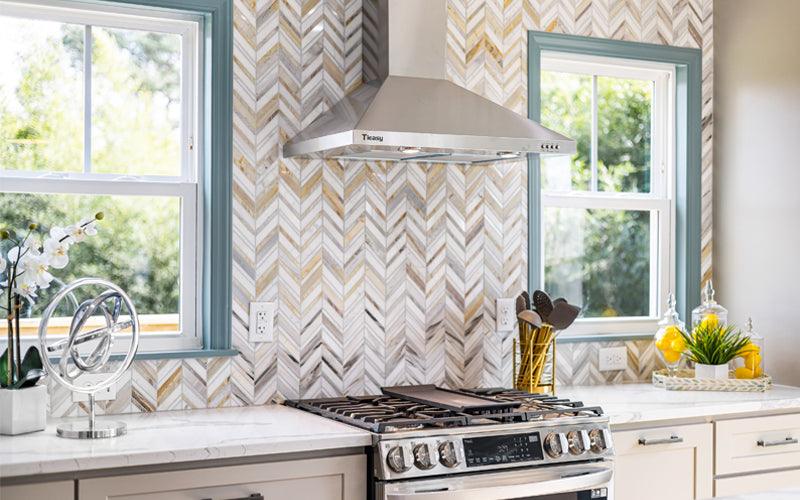1. When it comes to choosing a range hood, there are several factors to consider. Here are some of the most important ones:
Size: Range hoods come in various sizes, so it's important to choose one that fits your stove and kitchen space. Make sure to measure your stove before making a purchase. Tieasy has 24inch 30inch 36inch range hoods.
Airflow: Range hoods are designed to remove smoke, steam, and cooking odors from your kitchen. The airflow rate is measured in cubic feet per minute (CFM). The higher the CFM rating, the more powerful the range hood will be.
Noise level: Range hoods can be noisy, so it's important to consider the noise level when making a purchase. A lower noise level will provide a better user experience. It's recommended to choose a product with a low noise level.
Filter type: Range hood filters usually come in two types: aluminum alloy filters and stainless steel filters. Aluminum alloy filters are more common and cheaper, but they need to be replaced frequently. Stainless steel filters are more durable, but they are more expensive.
Ease of cleaning: During use, grease can accumulate in the filters and exhaust ducts, affecting the range hood's exhaust performance and lifespan. Therefore, when choosing a range hood, consider the ease of cleaning and choose products with removable and easy-to-clean filters.
2. When using a range hood, there are several things to keep in mind:
Installation: Range hoods should be installed above or beside the stove, keeping a certain distance. Follow the installation instructions provided with the range hood to ensure safety and stability.
Usage: During cooking, turn on the range hood to remove smoke and grease produced during cooking. Also, pay attention to the airflow rate to take full advantage of the range hood's exhaust capacity.
Cleaning: Regularly clean the filters and exhaust ducts during use to ensure the range hood's exhaust performance and lifespan. Pay attention to the cleaning method and frequency to avoid damaging the filters and exhaust ducts.
To sum up, range hoods are a useful kitchen appliance that can effectively remove smoke and grease produced during cooking, keeping your kitchen clean and comfortable. When choosing a range hood, consider factors such as size, airflow, noise level, filter type, and ease of cleaning, and choose products that meet your needs and budget. When using a range hood, remember to pay attention to installation, usage, and cleaning to ensure the best performance and lifespan.
Range hoods are not only functional but can also be an aesthetic addition to your kitchen. There are various designs and finishes available, so it's important to choose one that matches your kitchen's style. For example, a stainless steel range hood can give a modern and sleek look, while a wooden range hood can add warmth and coziness to your kitchen.Another factor to consider is the type of range hood. There are three main types: ducted, ductless, and convertible. Ducted range hoods vent smoke and steam outside your home through a duct system. Ductless range hoods use filters to clean the air before recirculating it back into the kitchen. Convertible range hoods can be used as ducted or ductless, depending on your preference and kitchen setup.
3. When choosing a range hood, it's also important to consider the brand and its reputation. Choose a reputable brand that offers quality products and good customer service. Read reviews and ask for recommendations from friends and family to help you make an informed decision.
In addition, consider the warranty and after-sales service. Range hoods are a long-term investment, and a good warranty and after-sales service can give you peace of mind and save you money in the long run.
4. Finally, it's important to keep in mind the cost of a range hood. Range hoods come in a wide range of prices, and it's important to choose one that fits your budget. However, don't compromise on quality for price. A good range hood can last for years and provide effective ventilation for your kitchen, saving you money in the long run by preventing damage to cabinets and walls from smoke and grease buildup.
In conclusion, choosing a range hood requires careful consideration of factors such as size, airflow, noise level, filter type, ease of cleaning, installation, usage, design, type, brand, warranty, after-sales service, and cost. By taking the time to research and compare products, you can find a range hood that meets your needs and budget and keeps your kitchen clean and comfortable.




Leave a comment
All comments are moderated before being published.
This site is protected by reCAPTCHA and the Google Privacy Policy and Terms of Service apply.